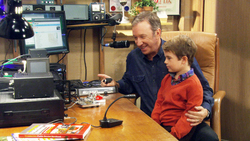 May 17, 2018 John E. Ross, KD8IDJ, Editor
| ||||||||
Amateur Radio Parity Act Language Inserted in National Defense Authorization Act ARRL has praised the work of US Representatives Joe Courtney (D-CT/2), Vicky Hartzler (R-MO/4), and Mike Rogers (R-AL/3) for their successful efforts in securing language in the FY 2019 National Defense Authorization Act (NDAA) that asks the FCC to grant radio amateurs living in restricted communities the right to install effective outdoor antennas. Text from the proposed Amateur Radio Parity Act (HR 555) formed the basis for the Courtney-Hartzler-Rogers Amendment to the NDAA.
Imlay pointed out, though, that certain conditions apply. Prior to erecting an antenna in a deed-restricted community, an applicant for an outdoor antenna may have to apply to the homeowners association (HOA) for prior approval of the particular antenna system proposed by the ham. The Act would not empower an HOA to deny approval of all outdoor antennas. But neither does it entitle radio amateurs residing in deed-restricted subdivisions to erect whatever antennas they want. "This legislation is a good, solid balance that favors hams and, as I say, allows tens of thousands of hams to erect effective antennas that they have no right to erect now," Imlay said. The amendment, offered by the bipartisan trio and accepted by the House Armed Services Committee by voice vote, will ensure that Amateur Radio operators will continue to play a vital role in supporting communications in a disaster or emergency. Amateur Radio has long-standing relationships with the Department of Defense through the Military Auxiliary Radio Service (MARS) and spectrum sharing.
Representatives Courtney and Adam Kinzinger (R-IL/16) spearheaded the effort to include the Parity Act language in the NDAA. Both are cosponsors of the Parity Act, which has passed the House by voice vote twice in the past 2 years. Recognizing the long-standing relationship between Amateur Radio and the Department of Defense, Congressman Kinzinger -- who served multiple tours for the USAF as a fighter pilot and is still a Major in the Air National Guard -- and Courtney have been champions of the legislation in Congress. "The steadfast support of the Amateur Radio community continually demonstrated by Congressmen Kinzinger and Courtney has been a godsend," said Hudson Director Mike Lisenco, N2YBB. "The Parity Act wouldn't be anywhere close to this stage without their strong support, and our organization is extremely grateful." ARRL has pledged to continue pressing for support to enact the Amateur Radio Parity Act throughout the legislative process. Read more. FT8 Activity Bumping Up at Some Expense to Other Modes Despite largely dismal HF conditions, there is no doubt that the recent FT8 digital protocol has hams on the air. The mode has caught on so quickly that co-developer Joe Taylor expressed surprise last fall at the rapid uptake of FT8 for making contacts on HF bands. Judging by Logbook of The World (LoTW) data, more than 2.3 million FT8 contacts were uploaded in 1 month -- a net gain of 1.2 million contacts on all modes over the same month last year, ARRL Radiosport Manager Norm Fusaro, W3IZ, said. Over the same period, activity in some of the other modes has declined.
Fusaro said that while some feel that FT8 is "taking over the world," subsuming all other modes, that's not the case. "Activity in the traditional modes of SSB and CW has decreased only slightly, by 10%," he said. "The real decrease is in RTTY and PSK activity and in the other WSJT-X modes. I believe poor propagation would have cut into SSB and CW activity, regardless of the new mode." Anecdotal reports support Fusaro's hard numbers, with wall-to-wall signals surrounding the FT8 watering holes.
Late last year, Denny Berg, WB9MSM, achieved his goal of completing DXCC using FT8. It took him just 4 months. "I can tell all of you that this mode is spreading like wildfire throughout all the HF bands," Berg told The Daily DX at the time. He said he was able to work all states on FT8 in about 6 weeks of operating. Taylor has characterized SSB and CW as "general-purpose modes" that are good for ragchewing, DXing, contesting, disaster communication, and other purposes. On the other hand, he has said, FT8 and the other protocols in the WSJT-X suite are "special-purpose modes," designed for making reliable, error-free contacts using signals that may be too weak to work using more traditional modes -- and sometimes even too far down in the noise even to hear. Hamvention® to Use AM Information Radio Station to Communicate with Inbound Traffic To avoid the first-day traffic tangles of its 2017 debut in Xenia, Ohio, Hamvention® 2018 will utilize a low-power Information Radio Station on 1620 kHz AM to get out the word on traffic, parking, and event details to visitors as they approach the city. The town is bracing to host an influx of some 25,000 Amateur Radio operators, exhibitors, and the curious, nearly doubling Xenia's population while the event is under way, May 19 - 21. Hamvention sponsor, the Dayton Amateur Radio Association (DARA) is hoping things will go more smoothly this year.
According to the Michigan firm providing the Information Radio Station, its signal "will blanket Xenia and 3 - 5 miles into surrounding Greene County, directing approaching motorists to the five special parking facilities." The founder of Information Station Specialists, Bill Baker, hails from Xenia. His company also is broadcasting and exhibiting at Hamvention (Building 6, Booth 6503) to introduce visitors to Information Station technology, which is used nationwide. Hamvention 2017 reported the second-largest attendance in its 67-year history. -- Thanks to Information Station Specialists, Inc. The Doctor Will See You Now! "RF Loss" is the topic of the current (May 10) episode of the "ARRL The Doctor is In" podcast. Listen...and learn!
Every 2 weeks, your host, QST Editor-in-Chief Steve Ford, WB8IMY, and the Doctor himself, Joel Hallas, W1ZR, will discuss a broad range of technical topics. You can also e-mail your questions to doctor@arrl.org, and the Doctor may answer them in a future podcast. Enjoy "ARRL The Doctor is In" on Apple iTunes, or by using your iPhone or iPad podcast app (just search for "ARRL The Doctor is In"). You can also listen online at Blubrry, or at Stitcher (free registration required, or browse the site as a guest) and through the free Stitcher app for iOS, Kindle, or Android devices. If you've never listened to a podcast before, download our beginner's guide. Just ahead: "Coping with Poor HF Conditions."
ARRL to Show Off Ham Radio at EAA AirVenture Oshkosh 2018 With support from member volunteers, ARRL will put Amateur Radio on display for visitors to EAA AirVenture Oshkosh 2018 -- the giant, annual airshow July 23 - 29 in Wisconsin, organized by the Experimental Aircraft Association (EAA). The event attracted more than 10,000 aircraft and nearly 600,000 visitors in 2017 to enjoy aerobatics displays, informative programs, hands-on workshops, and diverse aircraft spanning all eras of flight.
ARRL's exhibit will promote Amateur Radio to newcomers and inform all attendees of the similarly diverse technology and innovation enjoyed by both hams and pilots.
"Ham pilots are doing all sorts of things from the sky, including long-distance HF communications, aircraft tracking using APRS beacons, and search and rescue," Carlson said. "Developing the capability to communicate from your aircraft to a ham on the ground is also fun!" ARRL has posted a short survey that invites pilots who are radio amateurs to share their ideas for exhibiting at EAA AirVenture 2018. The ARRL display will build upon existing ham radio demonstrations at the show, including EAA Amateur Radio Special Event station W9ZL, organized annually by the Fox Cities Amateur Radio Club in Appleton, Wisconsin, and set up at the Pioneer Airport airstrip in Oshkosh. W9ZL will be on the air throughout the week of the Oshkosh air show. Space Station Digital Amateur Television Signal Not Being Seen on the Ground The signal from the digital amateur television (DATV) transmitter aboard the International Space Station (ISS) cannot be detected on the ground, the Amateur Radio on the International Space Station (ARISS) has reported. The unit indicates that it is functioning. So far, ARISS has not been able to pin down the problem.
"A series of steps are currently being undertaken to try to diagnose the problem," a May 10 announcement from ARISS said. "However, if an actual failure occurred, only a ground-based evaluation will fully diagnose the problem. The ARISS International team is working diligently to bring [the system] back to full operation as soon as practical." The DATV system is known variously as "HamVideo" and "HamTV." ARISS said it has begun coordination with its space agency partners and sponsors to "expeditiously troubleshoot the issue onboard and, if necessary, troubleshoot and repair the device on the ground." The DATV transmitter has proved to be a valuable educational asset that ISS crew members have enjoyed employing during ARISS school and group contacts. In particular, astronauts Tim Peake, KG5BVI; Paolo Nespoli, IZ0JPA, and Thomas Pesquet, KG5FYG, made routine use of the DATV system to enhance the ham radio contact experience for students and educators. Ground stations in Australia and Europe have functioned to receive and distribute the Amateur Radio TV signal from the ISS. Ground stations are under development in the US. Several hams in Japan have set up ground stations that have received the DATV signal from the ISS.
The DATV system was first proposed more than 17 years ago. It was commissioned during a series of tests in 2014. Informal Amateur Radio Nets Being Maintained in Wake of Volcanic Eruptions in Hawaii Two informal informational nets remain open on the island of Hawaii ("The Big Island") in the wake of recent and ongoing volcanic eruptions and seismic activity, Pacific Section Emergency Coordinator Clement Jung, KH7HO, reports. No formal traffic has been passed, but frequencies are being monitored.
"All normal communications, such as cell, landline phones, internet, and public safety, are operational," Jung told ARRL. Fissures associated with the Kilauea volcano on The Big Island began erupting on May 3, spewing lava and venting high levels of sulfur dioxide. An Amateur Radio net is in operation on 7.088 MHz (SSB), and the Voluntary Organizations Active in Disaster (VOAD) 146.720 MHz repeater (100 Hz tone) on Mauna Kea was activated after Hawaii's governor issued an emergency declaration. A federal disaster declaration has been approved. The Hawaiian Volcano Observatory reports active venting of lava and hazardous fumes continues, with no end in sight. The Hawaii Volcanoes National Park closed after roads and trails were damaged. The Observatory this week increased the Aviation Color Code to RED, due to increased ash emission. FEMA reports some 360 evacuees are staying in emergency shelters. Some 2,000 residents have been evacuated in all. "Twenty fissure vents have formed in and around the Leilani estates subdivision," the agency said in its May 17 report. "Air quality in the southeast area of Lanipuna Gardens has been rated 'condition red' (immediate danger to health) for high levels of sulfur dioxide. Volcanic-tectonic seismicity continues." The US Geodetic Survey has warned that new lava outbreaks could happen "at any time," as well as "more energetic ash emissions." National Hurricane Center's WX4NHC will be On the Air for Annual Station Test WX4NHC, the Amateur Radio station at the National Hurricane Center (NHC) in Miami, will be on the air for the annual station test on Saturday, May 26, 1300 until 2100 UTC. This will be the station's 38th year of public service at the NHC. The purpose of the annual event is to test Amateur Radio station equipment, antennas, and computers in advance of the Atlantic Hurricane season -- June 1 through November 30.
WX4NHC will be on the air on HF, VHF, UHF, 2- and 30-meter APRS and WinLink; subject must contain "//WL2K". The Hurricane Watch Net frequency of 14.325 MHz will be primary for WX4NHC. Operation also will take place on the VoIP Hurricane Net 2000-2100 UTC. (IRLP node 9219; EchoLink WX-TALK Conference node 7203). Florida Statewide SARNET and local VHF and UHF repeaters will be contacted. QSLs are available via WD4R, with an S.A.S.E. Maritime Radio Historical Society's Museum Station K6KPH is Back Maritime Radio Historical Society (MRHS) Amateur Radio station K6KPH is back on the air after a brief hiatus, although still at a minimal level at this point. K6KPH, intended as a tribute to KPH, the "wireless giant of the Pacific," relays the W1AW Field Day Bulletin, and W1AW Morse code practice qualifying runs for west coast amateurs.
"Not all the K6KPH frequencies were back on at first, as we had to change antenna assignments to get the minimum service we have now," said Steve Hawes, WB6UZX, who explains that K6KPH is "sort of" back, as some repair work is pending. Hawes said the crew of K6KPH volunteers made some temporary repairs to get some antennas back in service, and the station now is usable on 80, 40, 20, 17, and 15 meters. He said K6KPH expects to be ready to handle the qualifying run transmissions starting with June's, and also will be transmitting the ARRL Field Day bulletins. "For the [Field Day] digital transmissions, I'll have to wrestle 7/8-inch Heliax between two different transmitters on 7 and 14 MHz," Hawes noted. K6KPH uses the original KPH transmitters, receivers, and antennas; no amateur equipment is employed. The transmitters for most bands are Henry HF-5000 commercial units, but the 1950s-vintage RCA commercial units, known as "K" and "L" sets, are used on special occasions. Transmitting antennas are double extended Zepps for frequencies below 12 MHz (K6KPH and KPH prefer megacycles to megahertz), and H over 2 for 12 MHz and above, all fed with open-wire line. The Bolinas, California, site that's now home to K6KPH and KPH originally was a 1914 Marconi Company facility with a 350-kW low-frequency rotary-gap transmitter for overseas radiotelegraph traffic.
Hawes said the Bolinas/Point Reyes sites were dark until the Maritime Radio Historical Society made a proposal in 2000 to the National Park Service -- Point Reyes National Seashore -- to restore and "interpret" the site, which would include putting it on the air. "The NPS does maintain the building and pay for the power, but there isn't a regular budget for radio and antenna maintenance," Hawes explained. "MRHS has been buying tubes and parts and paying for some antenna repairs and tree trimming. The park has obtained grants over the years for major antenna work, and there is another one pending for later this year to rebuild some of the 'H-Frames' -- transmission line supports. The work we did -- and paid for -- was to get back on the air until the full rebuild work is done." Read more. In Brief...
Last Man Standing Moving to Fox Network There will be a season 7 of the TV show Last Man Standing, in which Tim Allen -- a real radio amateur -- plays Mike Baxter, KA0XTT. The primary difference is that the show now will appear on the Fox Network. A year ago, ABC axed Last Man Standing, which had attracted more than 8.3 million viewers. The network did not own the show but was licensing it from 20th Century Fox. John Amodeo, NN6JA, has been a co-executive producer, producer, or supervising producer of the comedy and was instrumental in Allen's getting his ham radio license in 2014; more than 2 dozen members of the crew were also inspired by the show's Amateur Radio component, and got licensed. Allen tweeted news of the Fox reboot on May 11. "Thanks to all you guys for the support," Allen said. "We are back." The K7RA Solar Update Tad Cook, K7RA, Seattle, reports: Weak solar activity continues, with sunspots returning on May 4-14, then departing again. From May 3 to May 9, the average daily sunspot number declined from 14.6 to 6.4, while average daily solar flux increased from 68.3 to 70.2. Earlier in the week, geomagnetic indicators showed unrest from a solar wind stream. The average daily planetary A index declined to 8.4 in this reporting week compared to 15.1 over the previous 7 days. The mid-latitude A index declined from 11.7 to 9. Predicted solar flux is 70 on May 17-20; 69 on May 21-23; 70 on May 24-29; 68 on May 30 - June 2; 70 on June 3-8; 71 on June 9-14; 70 on June 15-25; 68 on June 26-29, and 70 on June 30. Predicted planetary A index is 18, 14, and 8 on May 17-19; 5 on May 20-31; 18 and 28 on June 1-2; 16 on June 3-4; 14, 12, and 8 on June 5-7; 5 on June 8-12; 18, 15, and, 10 on June 13-15; 5 on June 16-27, and 18, 28, and 16 on June 28-30. Sunspot numbers for May 10 - 16 were 11, 11, 12, 11, 0, 0, and 0, with a mean of 6.4. The 10.7-centimeter flux was 69.6, 70.3, 69.8, 70.9, 70.3, 70.3, and 69.9, with a mean of 70.2. Estimated planetary A indices were 12, 16, 10, 8, 5, 4, and 4, with a mean of 8.4. Estimated mid-latitude A indices were 11, 19, 10, 10, 5, 5, and 3, with a mean of 9. Send me your reports or observations. Just Ahead in Radiosport
See the ARRL Contest Calendar for more information. For in-depth reporting on Amateur Radio contesting, subscribe to The ARRL Contest Update via your ARRL member profile e-mail preferences. Upcoming ARRL Section, State, and Division Conventions
Find conventions and hamfests in your area.
. .
Subscribe to...
Free of charge to ARRL members...
Find ARRL on Facebook! Follow us on Twitter, Snapchat @ARRLHQ, and Instagram! | ||||||||
 "The bill does entitle each and every Amateur Radio operator living in a deed-restricted community to erect an effective outdoor antenna. Full stop. That is the principal benefit of this legislation," ARRL General Counsel Chris Imlay, W3KD, stressed. "There are tens of thousands of ham radio licensees who now, absent the legislation, cannot erect any outdoor antenna at all. This enables them in the same way PRB-1 has enabled hams to address unreasonably restrictive zoning ordinances during the past 33 years."
"The bill does entitle each and every Amateur Radio operator living in a deed-restricted community to erect an effective outdoor antenna. Full stop. That is the principal benefit of this legislation," ARRL General Counsel Chris Imlay, W3KD, stressed. "There are tens of thousands of ham radio licensees who now, absent the legislation, cannot erect any outdoor antenna at all. This enables them in the same way PRB-1 has enabled hams to address unreasonably restrictive zoning ordinances during the past 33 years."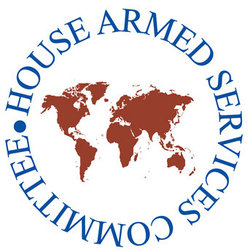 The Armed Services Committee passed the NDAA by a 60-to-1 voice vote after a 14-hour markup that ran well into the night. The bill now awaits House floor action. The Senate will begin its markup of the NDAA during the week of May 21.
The Armed Services Committee passed the NDAA by a 60-to-1 voice vote after a 14-hour markup that ran well into the night. The bill now awaits House floor action. The Senate will begin its markup of the NDAA during the week of May 21..JPG) "Year-to-date DXCC applications are up by 11% over the same period last year," Fusaro said. "So far, we have processed 898 Worked All States (WAS) applications -- a 72% increase over the same period last year. Of those applications, 347 -- or 39% -- were FT8 endorsements. Application for VUCC are also up by 33% over 2017."
"Year-to-date DXCC applications are up by 11% over the same period last year," Fusaro said. "So far, we have processed 898 Worked All States (WAS) applications -- a 72% increase over the same period last year. Of those applications, 347 -- or 39% -- were FT8 endorsements. Application for VUCC are also up by 33% over 2017."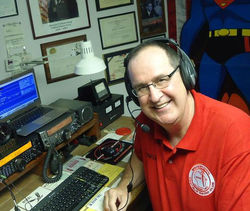
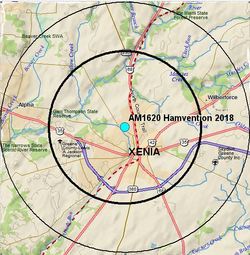 Due to the web of two-lane roads that serves the venue -- the Greene County Fairgrounds and Expo Center -- Hamvention established shuttle-bus operation to alleviate traffic congestion. The hope is that the information station will persuade visitors to park at the shuttle lots, and take a shuttle to the venue.
Due to the web of two-lane roads that serves the venue -- the Greene County Fairgrounds and Expo Center -- Hamvention established shuttle-bus operation to alleviate traffic congestion. The hope is that the information station will persuade visitors to park at the shuttle lots, and take a shuttle to the venue. Sponsored by
Sponsored by 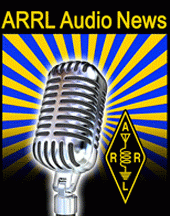 "Extra, Extra! Hear All about Hamvention!
"Extra, Extra! Hear All about Hamvention!  "The cross-over between Amateur Radio operators and pilots, aviation enthusiasts, and air show attendees has a strong correlation," said ARRL Central Division Director Kermit Carlson, W9XA, who is part of the volunteer team organizing the ham radio exhibit at AirVenture. "Attendees include many licensed and prospective Amateur Radio operators."
"The cross-over between Amateur Radio operators and pilots, aviation enthusiasts, and air show attendees has a strong correlation," said ARRL Central Division Director Kermit Carlson, W9XA, who is part of the volunteer team organizing the ham radio exhibit at AirVenture. "Attendees include many licensed and prospective Amateur Radio operators."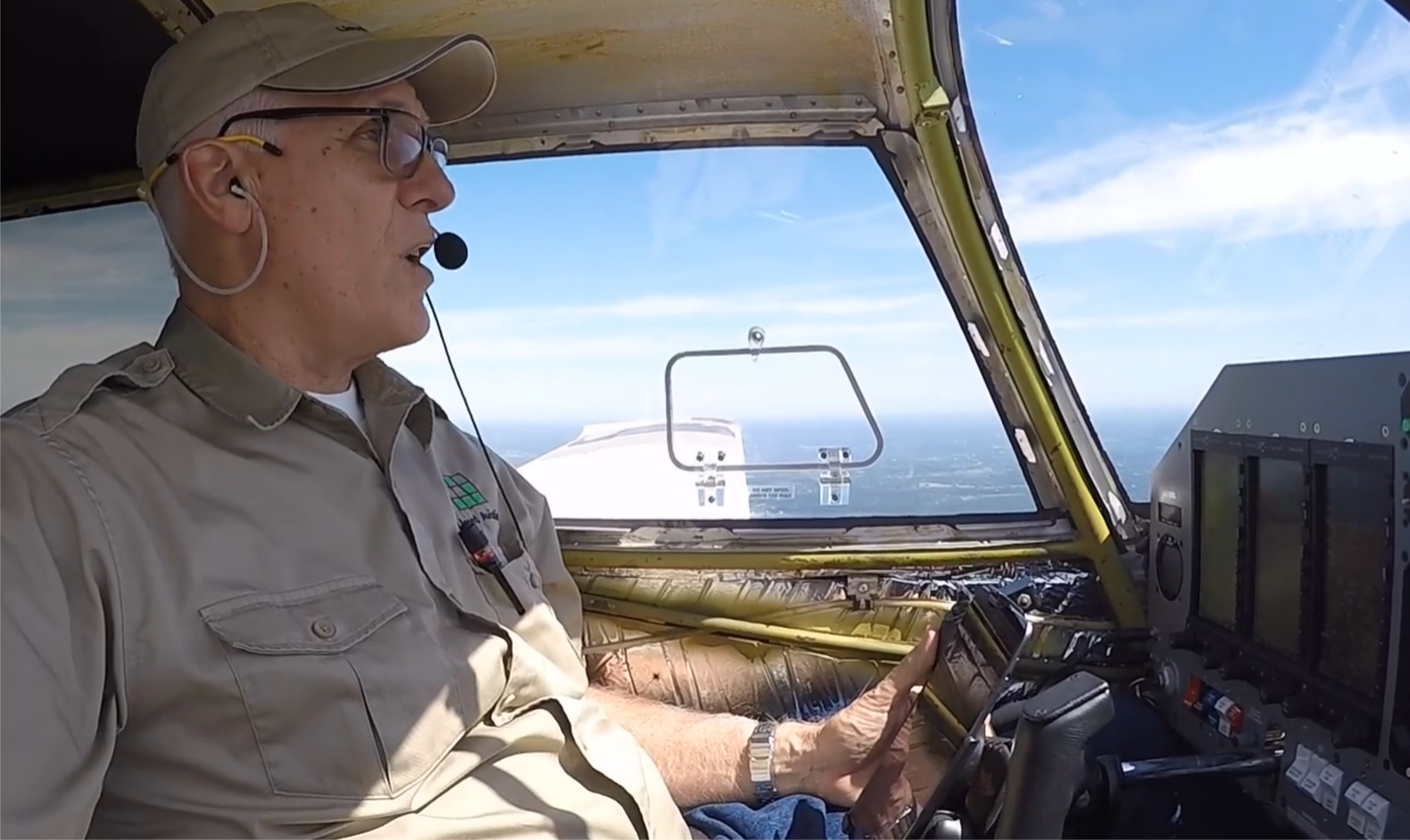
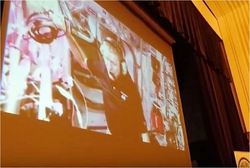
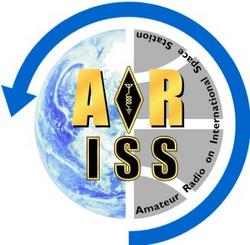 Peake inaugurated formal use of the DATV system for a 2016 ARISS school contact with students at a school in Rickmansworth, England. The DATV system, located in the Columbus module of the ISS, allowed students at Royal Masonic School to both watch and listen as Peake, operating under the ISS call sign GB1SS, answered their questions about life in space. The one-way DATV downlink took place near 2.4 GHz, while the two-way FM audio component was maintained on 2 meters.
Peake inaugurated formal use of the DATV system for a 2016 ARISS school contact with students at a school in Rickmansworth, England. The DATV system, located in the Columbus module of the ISS, allowed students at Royal Masonic School to both watch and listen as Peake, operating under the ISS call sign GB1SS, answered their questions about life in space. The one-way DATV downlink took place near 2.4 GHz, while the two-way FM audio component was maintained on 2 meters.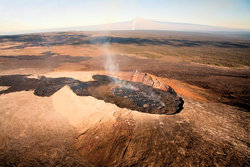
 "This event is good practice for ham radio operators worldwide as well as for National Weather Service (NWS) staff to become familiar with the Amateur Radio communications available during times of severe weather," said WX4NHC Assistant Coordinator Julio Ripoll, WD4R. "We will be making brief contacts on many frequencies and modes, exchanging signal reports and basic weather data (sunny, rain, etc.) with any station in any location."
"This event is good practice for ham radio operators worldwide as well as for National Weather Service (NWS) staff to become familiar with the Amateur Radio communications available during times of severe weather," said WX4NHC Assistant Coordinator Julio Ripoll, WD4R. "We will be making brief contacts on many frequencies and modes, exchanging signal reports and basic weather data (sunny, rain, etc.) with any station in any location."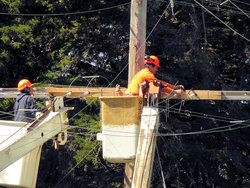
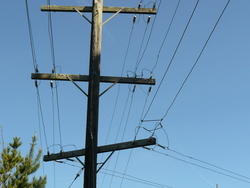
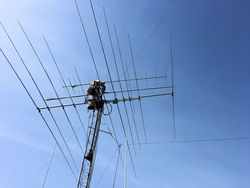 JK Antennas Donates New Multiband Yagi to W1HQ ARRL Club Station:
JK Antennas Donates New Multiband Yagi to W1HQ ARRL Club Station: -on-May-11-2018.JPG) Three CubeSats with Amateur Radio Payloads Deployed from ISS: The Japan Aerospace Exploration Agency (JAXA) has announced that three CubeSats carrying Amateur Radio payloads, including one with a V/U linear transponder, were deployed from the International Space Station (ISS) on May 11 at around 1030 UTC. Irazú (Costa Rica) and 1KUNS-PF (Kenya) carry beacon/telemetry in the 70-centimeter Amateur Radio band, while UBAKUSAT (Turkey) carries an Amateur Radio linear transponder for SSB and CW, in addition to CW and telemetry beacons. Irazú is a 1U CubeSat developed by students at the Costa Rica Institute of Technology, with a telemetry beacon at 436.500 MHz. 1KUNS-PF is a 3U CubeSat developed by students at the University of Nairobi, with a telemetry beacon (9.6 kbps) at 437.300 MHz. UBAKUSAT, a 3U CubeSat developed by students at the Istanbul Technical University, has a CW beacon at 437.225 MHz, and a telemetry beacon at 437.325 MHz. The linear transponder downlink is 435.200 - 435.250 MHz; the uplink is 145.940 - 145.990 MHz. -- Thanks to Masa Arai, JN1GKZ, via AMSAT-UK
Three CubeSats with Amateur Radio Payloads Deployed from ISS: The Japan Aerospace Exploration Agency (JAXA) has announced that three CubeSats carrying Amateur Radio payloads, including one with a V/U linear transponder, were deployed from the International Space Station (ISS) on May 11 at around 1030 UTC. Irazú (Costa Rica) and 1KUNS-PF (Kenya) carry beacon/telemetry in the 70-centimeter Amateur Radio band, while UBAKUSAT (Turkey) carries an Amateur Radio linear transponder for SSB and CW, in addition to CW and telemetry beacons. Irazú is a 1U CubeSat developed by students at the Costa Rica Institute of Technology, with a telemetry beacon at 436.500 MHz. 1KUNS-PF is a 3U CubeSat developed by students at the University of Nairobi, with a telemetry beacon (9.6 kbps) at 437.300 MHz. UBAKUSAT, a 3U CubeSat developed by students at the Istanbul Technical University, has a CW beacon at 437.225 MHz, and a telemetry beacon at 437.325 MHz. The linear transponder downlink is 435.200 - 435.250 MHz; the uplink is 145.940 - 145.990 MHz. -- Thanks to Masa Arai, JN1GKZ, via AMSAT-UK 